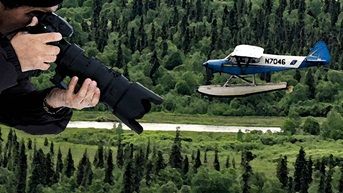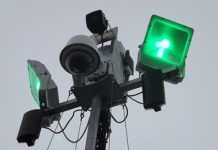Alaska law enforcement agencies do not have the right to conduct aerial surveillance of private property with high powered telephoto technology without first obtaining a search warrant. This was the March 8 ruling of the Alaska Supreme Court in the case, State of Alaska v. John William McKelvey.
Back in 2012 the Alaska State Troopers received a tip that McKelvey had a grow operation on his property located in rural Fairbanks. After initially flying over the property and taking photos with a telephoto lens, the Troopers then obtained a search warrant. The central issue in this case concerned the validity of the search warrant and whether the Troopers’ use of aerial photos violated the Fourth Amendment of the U.S. Constitution and the Alaska Constitution’s rights to privacy and freedom from unreasonable searches.
According to the Alaska Supreme Court’s ruling, the State Constitution protects Alaskans from law enforcement aerial surveillance by requiring a warrant prior to taking pictures of private property from the sky.
In issuing its ruling the court rejected the state’s claim that because small airplane travel is so common in Alaska, and because any passenger might peer into one’s yard and snap a picture of them, law enforcement officials may do the same.
“We disagree,” the court stated. “The Alaska Constitution protects the right to be free of unreasonable searches. The fact that a random person might catch a glimpse of your yard while flying from one place to another does not make it reasonable for law enforcement officials to take to the skies and train high-powered optics on the private space right outside your home without a warrant.”
Such activity is “inconsistent with the aims of a free and open society,” the court stated.
The case began 12 years ago when McKelvey lived in a sparsely populated and heavily wooded area north of Fairbanks. In the clearing was a house and greenhouse, but surrounding trees blocked ground-level view of the property from anyone outside the clearing. Additionally, a gate blocked vehicles from entering the driveway, and numerous signs warned potential visitors that they were not welcome.
Troopers, however, received a tip from a confidential informant that McKelvey was growing marijuana on the property. The informant described seeing around 30 marijuana plants in five-gallon buckets and claimed that McKelvey took the plants into the greenhouse at night.
To confirm the informant’s report, two Troopers flew past McKelvey’s property in an airplane, roughly a quarter mile to a half mile south of the house at an altitude of roughly 600 feet. The officers photographed the property using a camera with a high-powered zoom lens, which allowed them to magnify the image roughly nine times what the naked eye can observe.
The court also noted that the rise of drone technology is important to consider. While drone use by law enforcement is currently limited by Alaska statute, the court warned that “the legal status of drones could change.”
“And it would not be wise for us to ignore, when assessing the risk that warrantless aerial surveillance poses to Alaskans’ sense of security and freedom, the likelihood that advances in technology will make aerial surveillance cheaper and more feasible in the coming years and decades,” the justices observed. “The fact that it is common for small aircraft to fly overhead does not make it unreasonable for Alaskans to think that what they do in the outdoor space of their homes that they have tried to keep private will remain private.”








